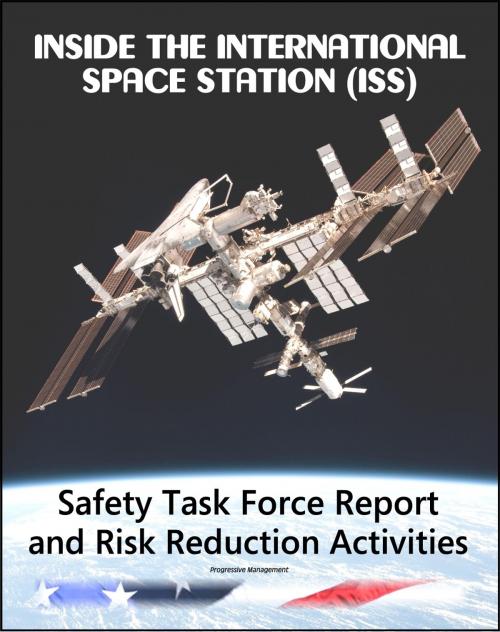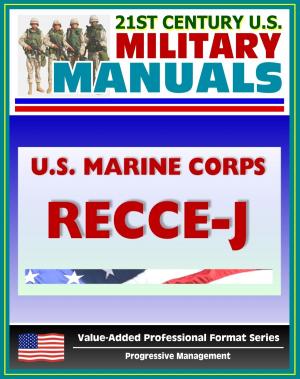Inside the International Space Station (ISS): NASA Independent Safety Task Force Final Report and Long-Term ISS Risk Reduction Activities - Loss of Crewmember, Destruction, Abandonment, Crew Health
Nonfiction, Science & Nature, Technology, Aeronautics & Astronautics, Science, Physics, Astrophysics & Space Science| Author: | Progressive Management | ISBN: | 9781476162041 |
| Publisher: | Progressive Management | Publication: | May 5, 2012 |
| Imprint: | Smashwords Edition | Language: | English |
| Author: | Progressive Management |
| ISBN: | 9781476162041 |
| Publisher: | Progressive Management |
| Publication: | May 5, 2012 |
| Imprint: | Smashwords Edition |
| Language: | English |
Two major documents reveal the risks and safety issues about the International Space Station (ISS). Experts from the Johnson Space Center, in a document entitled Long-Term ISS Risk Reduction Activities (2011) note the following:
Many not close to the ISS Program might be alarmed to learn that the current risk of MMOD penetrating the pressurized habitable volume of ISS (an actual "through-hole") over a ten year period of time is about 50/50... basically, a coin toss. Actually, it is a little worse. It is important to note that there are many different case-specific types of "through-holes", and while all penetrations are bad, many do not necessarily represent a catastrophic event. With that said, MMOD is still a top safety risk for the ISS Program. It is also important to note that from an historical perspective, the ISS Program actually baselined requirements that allowed for about a 25% chance of such a penetration (still a sizable risk); however, that risk posture has slowly eroded over the years.
As the assembly of the ISS nears completion, it is worthwhile to step back and review some of the actions pursued by the Program in recent years to reduce risk and enhance the safety and health of ISS crewmembers, visitors, and space flight participants. While the initial ISS requirements and design were intended to provide the best practicable levels of safety, it is always possible to further reduce risk - given the determination, commitment, and resources to do so. The following is a summary of some of the steps taken by the ISS Program Manager, by our International Partners, by hardware and software designers, by operational specialists, and by safety personnel to continuously enhance the safety of the ISS, and to reduce risk to all crewmembers.
While years of work went into the development of ISS requirements, there are many things associated with risk reduction in a Program like the ISS that can only be learned through actual operational experience. These risk reduction activities can be divided into roughly three categories:
• Areas that were initially noncompliant which have subsequently been brought into compliance or near compliance (i.e., Micrometeoroid and Orbital Debris [MMOD] protection, acoustics)
• Areas where initial design requirements were eventually considered inadequate and were subsequently augmented (i.e., Toxicity hazard level-4 materials, emergency procedures, emergency equipment, control of drag-throughs)
• Areas where risks were initially underestimated, and have subsequently been addressed through additional mitigation (i.e., Extravehicular Activity [EVA] sharp edges, plasma shock hazards)
Due to the hard work and cooperation of many parties working together across the span of more than a decade, the ISS is now a safer and healthier environment for our crew, in many cases exceeding the risk reduction targets inherent in the intent of the original design. It will provide a safe and stable platform for utilization and discovery for years to come.
Two major documents reveal the risks and safety issues about the International Space Station (ISS). Experts from the Johnson Space Center, in a document entitled Long-Term ISS Risk Reduction Activities (2011) note the following:
Many not close to the ISS Program might be alarmed to learn that the current risk of MMOD penetrating the pressurized habitable volume of ISS (an actual "through-hole") over a ten year period of time is about 50/50... basically, a coin toss. Actually, it is a little worse. It is important to note that there are many different case-specific types of "through-holes", and while all penetrations are bad, many do not necessarily represent a catastrophic event. With that said, MMOD is still a top safety risk for the ISS Program. It is also important to note that from an historical perspective, the ISS Program actually baselined requirements that allowed for about a 25% chance of such a penetration (still a sizable risk); however, that risk posture has slowly eroded over the years.
As the assembly of the ISS nears completion, it is worthwhile to step back and review some of the actions pursued by the Program in recent years to reduce risk and enhance the safety and health of ISS crewmembers, visitors, and space flight participants. While the initial ISS requirements and design were intended to provide the best practicable levels of safety, it is always possible to further reduce risk - given the determination, commitment, and resources to do so. The following is a summary of some of the steps taken by the ISS Program Manager, by our International Partners, by hardware and software designers, by operational specialists, and by safety personnel to continuously enhance the safety of the ISS, and to reduce risk to all crewmembers.
While years of work went into the development of ISS requirements, there are many things associated with risk reduction in a Program like the ISS that can only be learned through actual operational experience. These risk reduction activities can be divided into roughly three categories:
• Areas that were initially noncompliant which have subsequently been brought into compliance or near compliance (i.e., Micrometeoroid and Orbital Debris [MMOD] protection, acoustics)
• Areas where initial design requirements were eventually considered inadequate and were subsequently augmented (i.e., Toxicity hazard level-4 materials, emergency procedures, emergency equipment, control of drag-throughs)
• Areas where risks were initially underestimated, and have subsequently been addressed through additional mitigation (i.e., Extravehicular Activity [EVA] sharp edges, plasma shock hazards)
Due to the hard work and cooperation of many parties working together across the span of more than a decade, the ISS is now a safer and healthier environment for our crew, in many cases exceeding the risk reduction targets inherent in the intent of the original design. It will provide a safe and stable platform for utilization and discovery for years to come.















